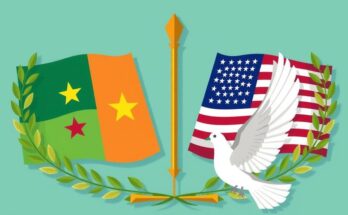The SSPDF faces significant challenges in building trust with civilians, as highlighted by recent clashes in South Sudan. Historical context reveals a shift in the army’s relationship with the people, necessitating improved engagement strategies. Effective community initiatives, alongside a shift in the army’s approach to collaboration, are essential for fostering mutual respect and establishing a stable national identity.
Recent conflicts in South Sudan’s Nasir County between the South Sudan People’s Defense Force (SSPDF) and the civilian group known as the “White Army” reveal a significant trust gap between the national army and the local population. These skirmishes mirror similar confrontations across the nation, indicating a persistent issue within the military-civilian relationship. As seen in August 2020 in Warrap State, tensions can escalate rapidly, resulting in tragic losses of life during governmental disarmament processes.
The dynamics of this relationship are vital for the stability of South Sudan. Strengthening ties between the SSPDF and civilians is essential for developing an effective military. Despite advancements in military technology, the core of a modern army is fundamentally human-centric. To remedy ongoing distrust, the SSPDF needs to foster a more collaborative partnership with the populace it is obligated to protect.
Implementing a “military-civil engagement manual” would be a constructive start for the SSPDF. Such a document would provide guidance for army personnel on effective ways to engage with local communities. It is crucial that army bases are transformed into positive influences for surrounding areas. For instance, military units could collaborate with civilians to drill boreholes, thereby delivering accessible clean water, improving perceptions, and establishing goodwill.
Reflecting on the historical context, during the liberation period from 1983 to 2005, the Sudan People’s Liberation Army (SPLA) thrived with civilian support as a liberation force with limited resources. In contrast, the modern SSPDF, as a well-funded national army, has the potential to draw more resources from the official government, relieving pressure on civilians.
Further community engagement could occur through the establishment of health clinics near military bases. These would primarily serve the military while also assisting local populations with basic healthcare needs. Initiatives such as these are essential to cultivating respect and reducing conflict between the army and communities.
Monthly public rallies with local authorities and international partners could also enhance communication. These forums would allow the SSPDF to address security concerns and explain its mandates collaboratively. Ensuring discussions are relevant and accessible by utilizing local languages would encourage greater community involvement.
Creating a community service day once a month would further integrate military forces into the fabric of civilian life. Activities such as waste collection and road maintenance would highlight the army’s commitment to their communities and foster trust. Additionally, imposing a rotation plan for troops would allow for fresh interactions with different communities and their unique cultures across South Sudan.
Maintaining discipline within the ranks remains critical. Establishing a framework for investigating human rights violations would demonstrate accountability and build trust with civilians. To bolster outreach, the SSPDF should utilize local media to discuss security issues and better connect with the populace.
In conclusion, the complexities of the military’s role demand significant change within the SSPDF. Strengthening communication and civil affairs divisions to ensure ongoing engagement with communities is imperative. If the SSPDF adopts innovative practices and demonstrates a commitment to serving the people, it can earn the necessary trust and support of South Sudan’s civilian population.
The relationship between the SSPDF and civilians is essential for the security and stability of South Sudan. By prioritizing community engagement and implementing practical initiatives, the SSPDF can reshape its image from a source of tension to a benefactor in public life. Thus, through strategic improvements and proactive collaboration, the SSPDF may emerge as a true army of the people, fostering trust and unity in South Sudan.
Original Source: www.radiotamazuj.org




